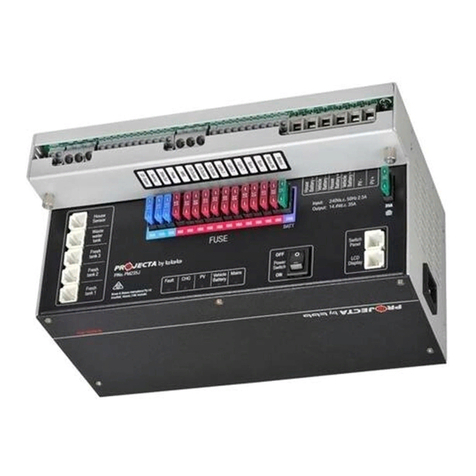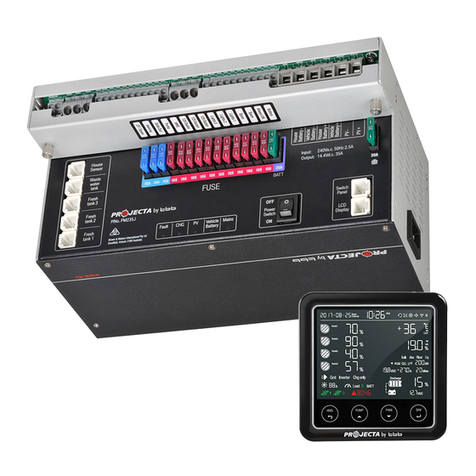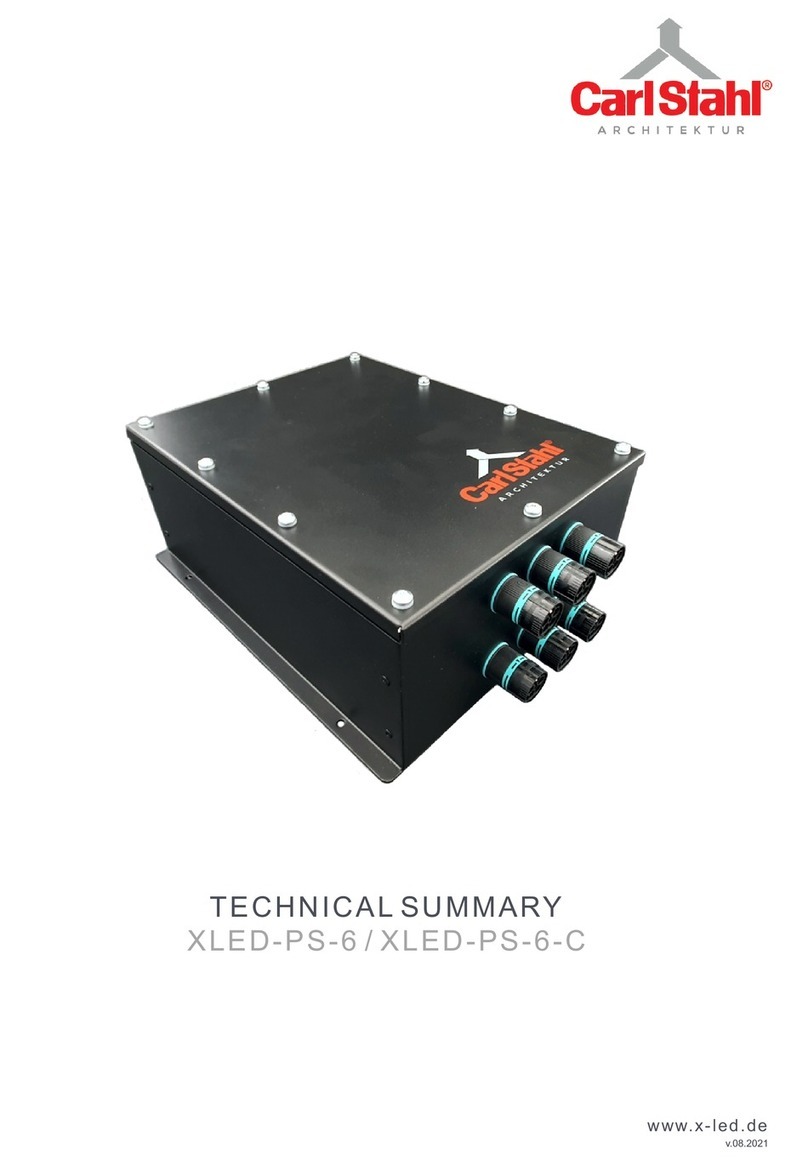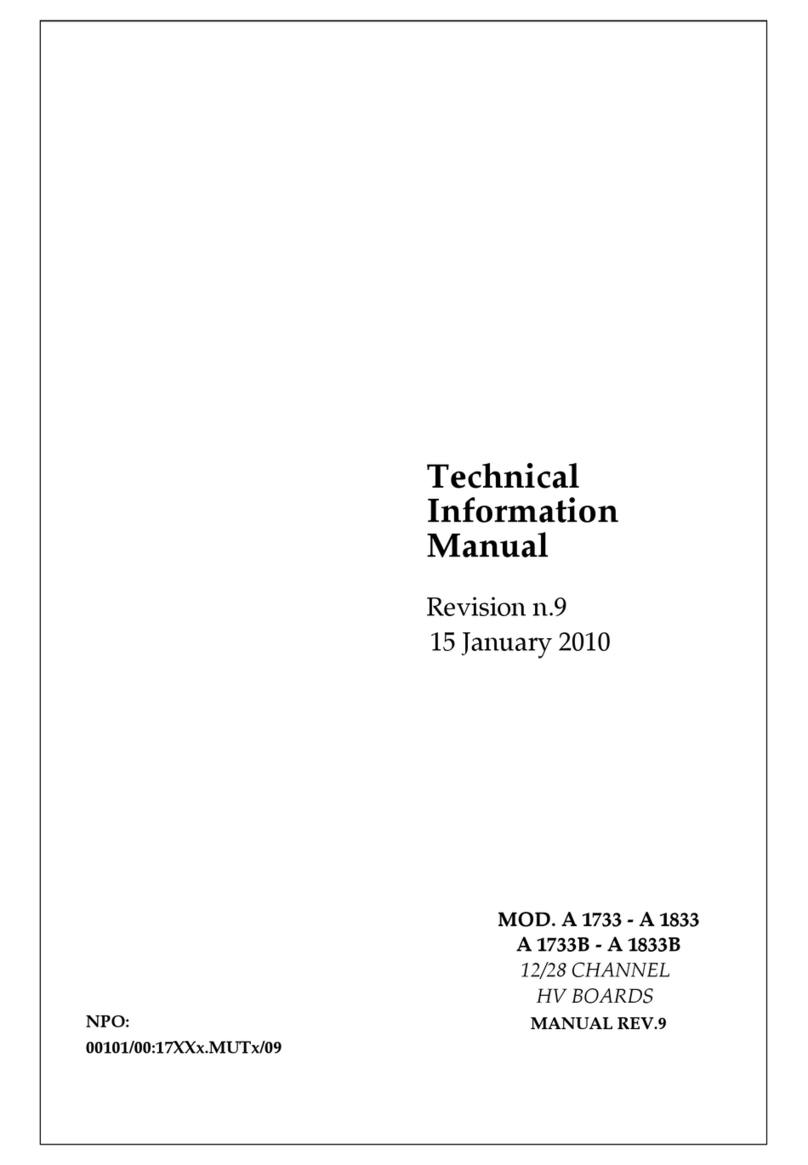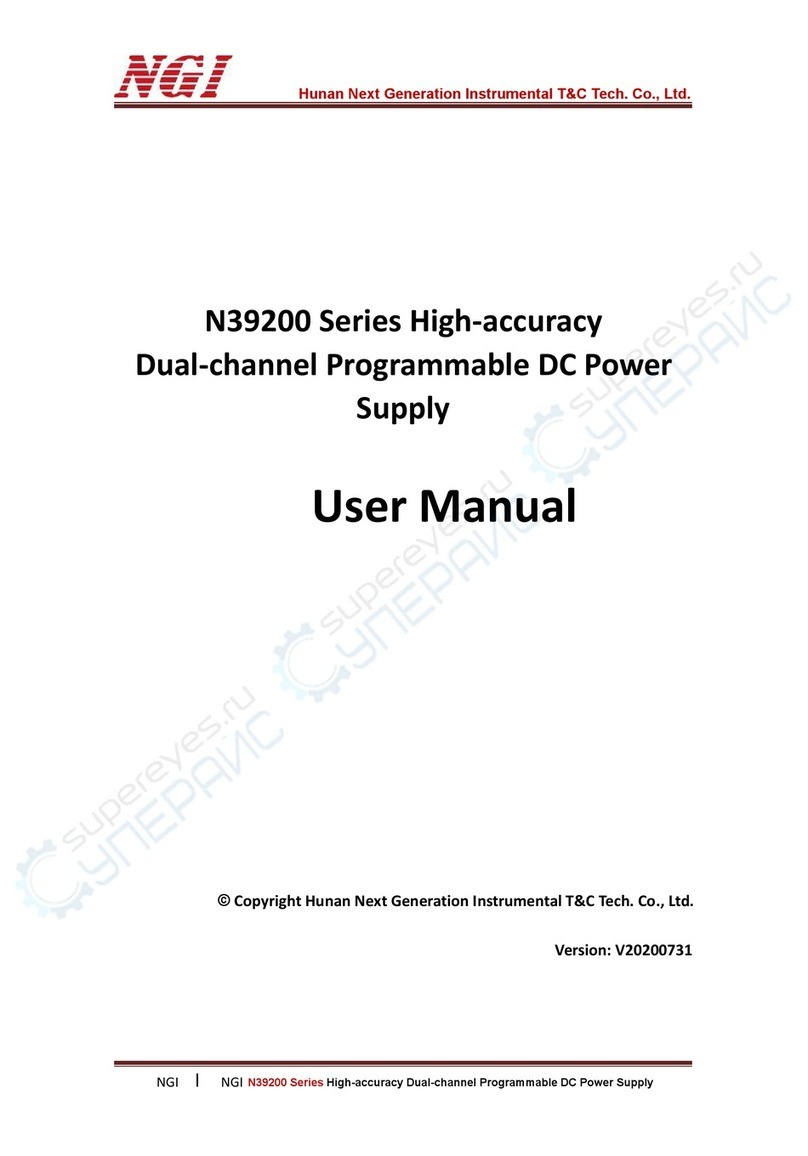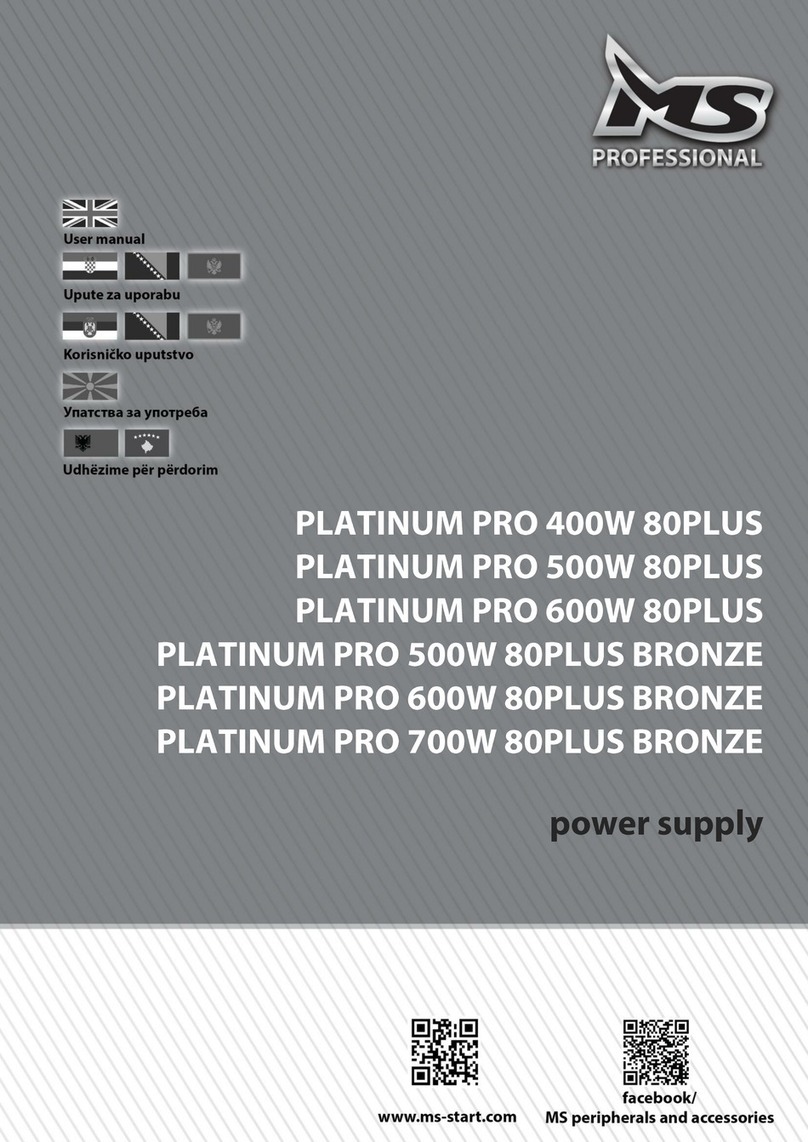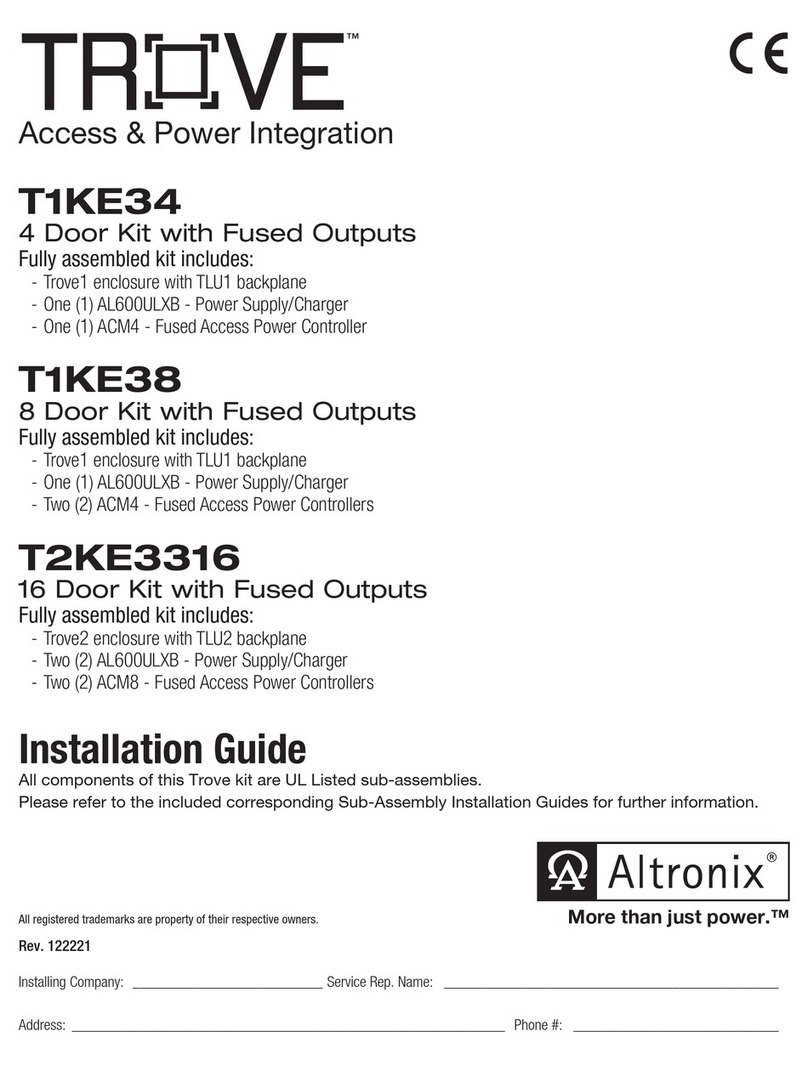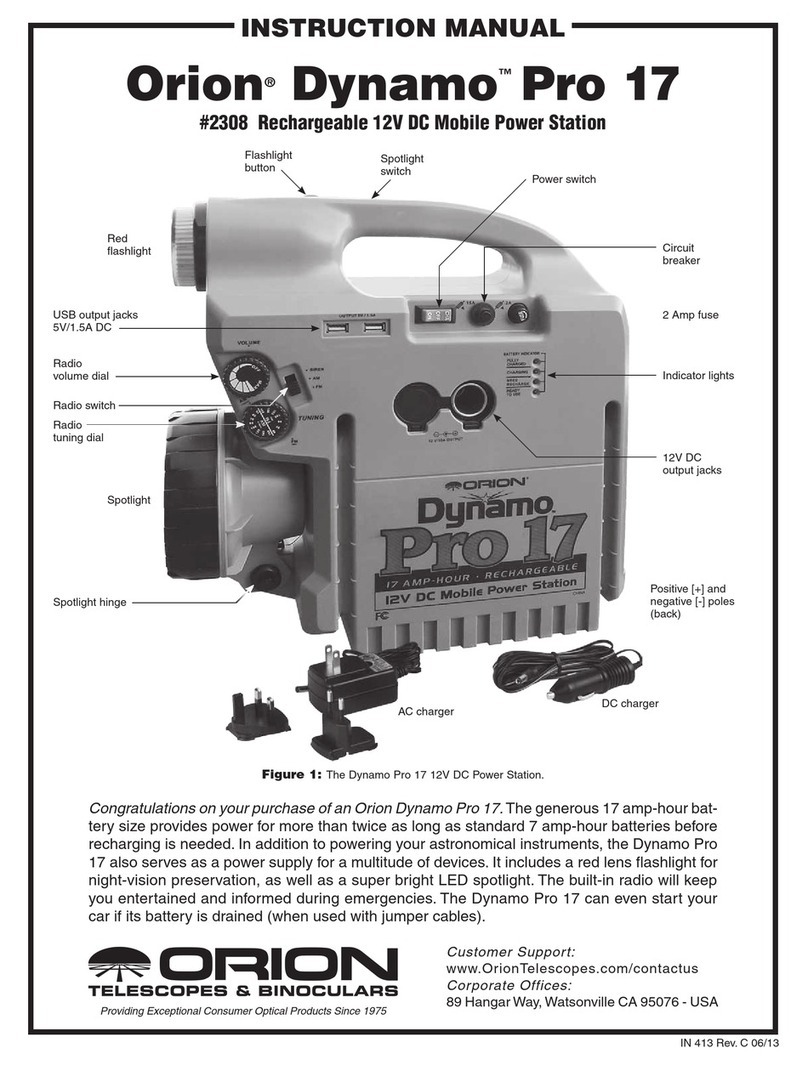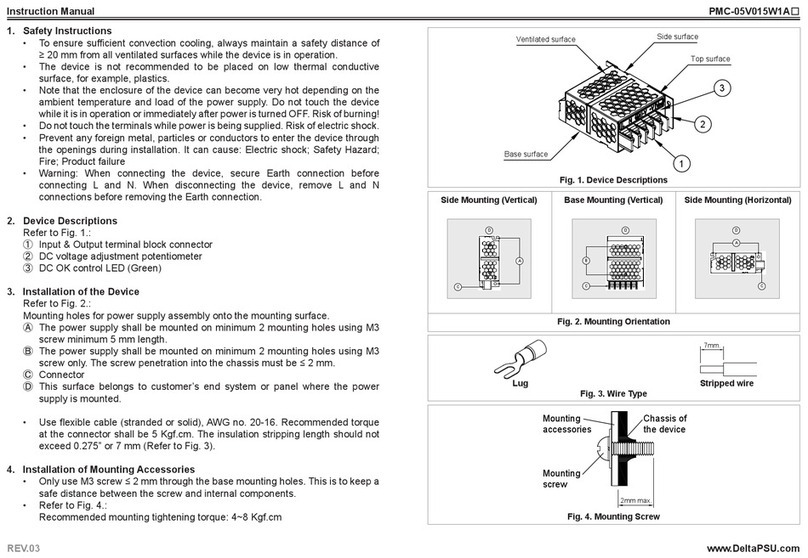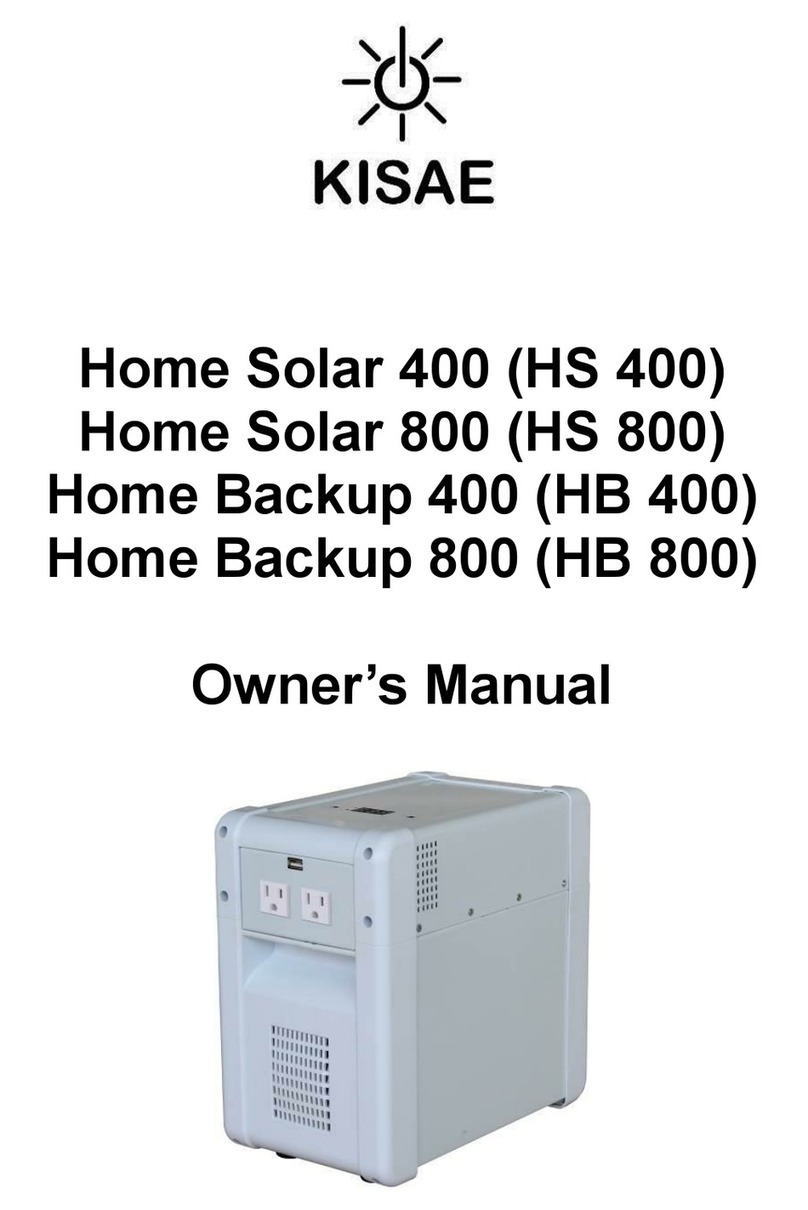Projecta INTELLI-RV PM300-BT User manual

INTELLI-RV
12V POWER MANAGEMENT SYSTEM
P/No. PM300-BT

2
IMPORTANT SAFETY INFORMATION
Please read this manual thoroughly before use and store in a safe place for future reference.
WARNINGS
• Explosive gases. Prevent ames and sparks. Provide adequate ventilation during charging
• Before charging, read the instructions
• For indoor use. Do not expose to rain
• For charging Lead Acid and LiFePO4batteries only (of the size & voltage specied in the
specication table.
• Always charge the battery on the correct voltage setting. Never set the charger to a higher
voltage than the battery
• Disconnect the 240V mains supply before making or breaking the connections to the battery
• The battery charger must be plugged into an earthed socket outlet
• Connection to supply mains is to be in accordance with national wiring rules
• Do not attempt to charge non-rechargeable batteries
• Never charge a frozen battery
• If the AC cord is damaged, do not attempt to use. It must be replaced or repaired by a
qualied technician
• Corrosive substances may escape from the battery during charging and damage delicate
surfaces. Store and charge in a suitable area
• This charger is not intended for use by persons (including children) with reduced physical,
sensory or mental capabilities, or lack of experience and knowledge, unless they have been
given supervision or instruction concerning the use of the appliance by a person responsible
for their safety
• Young children should be supervised to ensure that they do not play with the appliance
• If the recreational vehicle is to be put in to storage without power, please turn off the BATTERY
MASTER SWITCH. If the recreational vehicle is to be put in to long term storage without
power, disconnect ALL cabling from the battery.

3
CONTENTS
1. INTRODUCTION 4
1.1 Features 5
1.2 Monitor 6
1.3 Water tank probe 6
2. KEY FEATURES AND FUNCTIONS 6
2.1 Multiple inputs 6
2.2 Battery charger of stationery/service battery 6
2.3 Vehicle battery charger 7
2.4 Power supply mode 7
2.5 MPPT solar charger controller 7
2.6 Voltage charging relay (VCR) 7
2.7 Categorised outputs 8
2.8 Battery low voltage protection 8
2.9 Manual battery switch 8
2.10 Precise battery measurement 8
2.11 Silent mode 8
3. STRUCTURE AND INSTALLATION 9
3.1 PM300-BT Power Management System 9
3.2 Monitor 10
3.3 Water tank probe 11
3.3.1 PMWS400 water tank probe 11
3.3.2 PMWS200 water tank probe 11
4. WIRING 12
4.1 Material 12
4.2 System schematic 13
4.3 Preparation 14
4.4 Connection 14
5. DISPLAY 15
5.1 PM300-BT Master Power Unit 16
5.2 Monitor PMLCD-BT 16
5.2.1 Monitor symbol explanation 16
5.2.2 Switch explanation 17
5.2.3 Alphabet explanation 17
6. OPERATION 18
6.1 Conguration on PM300-BT 18
6.1.1 Battery capacity and battery type 18
6.1.2 Select switch local/remote 19
6.2 Conguration on monitor 19
6.2.1 Monitor conguration menu 20
6.3 Maintenance 21
6.3.1 Battery monitor maintenance 21
6.3.2 Daily maintenance 21
7. TROUBLE SHOOTING 22
7.1 L.E.D Display on PM300-BT Unit 22
7.2 Error code on monitor 22
8. SPECIFICATION 23

4
1. INTRODUCTION
PM300-BT is designed for use in caravans or motor homes.The unit has integrated functions such as: battery charger,
distribution blocks, MPPT solar charger controller, charging relay, Low Voltage Disconnect (LVD), water pump controller, water
tank indicator and LCD Display.
The PM300-BT is designed for an easy installation and a user-friendly interface.
SYSTEM COMPONENTS:
1. Master Power Unit
2. Monitor
3. 4 Water tank sensors (Not supplied)
4. Cables (Refer to Chapter 4.1 for the cable list)
Figure 1 System Components for PM300-BT
P/No. PMLCD-BT
Fresh Water Tank 1 Probe
(Not supplied)
Fresh Water Tank 2 Probe
(Not supplied)
Tap Water Tank Probe
(Not supplied)
Waste Water Tank Probe
(Not supplied)
P/No. PM10
Outdoor Temperature
PV
Service Battery
Starter Battery
P/No. PMWS200 or PMSW400
P/No. PMWS200 or PMSW400
P/No. PMWS200 or PMSW400
P/No. PMWS200 or PMSW400
Battery Temperature
Sensor P/No. PM30
P/No. PM335
P/No. PM335

5
1.1 Features
• Smart battery charger 12V 35A (30A for charging current)
• Multi stage adaptive charging algorithm
• Active Power Factor Correction (PFC) charging
• Temperature compensation charging
• Voltage compensation charging
• Float Charge for starter battery
• Solar charge controller (MPPT), 30A
• 14 built in fused outputs
• Charging from Alternator at 12V 60A - 60A continuously, 100A 30mins
• Low battery voltage protection
• Built-in battery switch to isolate the battery when in storage
• Built-in shunt for precise battery measurement
• 1 water pump control with up to 4 connections for water sensors
• Thermal control fan
• Spring terminal and screw terminal
• T-bus compatible
Figure 2 System Schematic

6
2. KEY FEATURES AND
FUNCTIONS
2.1 Multiple Inputs
The PM300-BT accepts inputs from AC mains, solar panel and
starter battery. However, only one source will provide power at
one time, see Table 1 at right for details.
AC MAINS x x
SOLAR x x
STARTER
BATTERY x x
DOMINATING
SOURCE
AC MAINS AC MAINS STARTER
BATTERY
Table 1 Multiple inputs
2.2 Battery Charger Of Stationery/Service Battery
The charger automatically starts when the appropriate qualied power is connected, either from grid, generator or solar.
With multiple charging stages (soft start-bulk absorption oat-recycle), PM300-BT is designed to fully charge battery quickly.
To guarantee the optimal charging for batteries of different states, the PM300-BT features Microprocessor-controlled charging
algorithm.The Float and Recycle charging programs guarantees that the battery condition does not change despite being
connected for a longer period.
1.2 Monitor PMLCD-BT
The monitor is a digital control center for complete on-board power.
FEATURES:
• T-Bus design (can be connected to multiple devices)
• System monitoring
• Conguration
• Built-in Bluetooth for pairing to smart phone
Figure 3 Overview of Monitor
1.3 Water Tank Probe
For PM300-BT, a maximum of 4 probes can be monitored.
NOTE: Always check the probe required for the water tank before purchase.
There are 2 probe styles:
PMWS200:
• Side installation
• Suitable for water tank
• Depth >200mm
PMWS400:
• Side installation
• Suitable for water tank
• Depth 300-400mm
Figure 4 PMWS200
Figure 5 PMWS400

7
Figure 6 Charging Algorithm
Battery Temperature Sensor
The BTS, P/No. PM30 (Battery Temperature Sensor) supplied with PM300-BT, measures the temperature of the battery and automatically adjusts, in real
time, to charge the battery properly at compensation rate of – 4mv±10%/°C/cell. In case BTS is not present, the PM300-BT will use 25°C as default.
Voltage Compensation Charging
With a voltage sensor the PM300-BT can automatically adjust its output to compensate the voltage drop caused by a cable.
This assures the right voltage is being delivered for optimal charging.
Adjustable Charging Capacity
Users can adjust the charging current by specifying the battery capacity. The charging current is set at threshold rate of 10% the of the
battery capacity (I = 0.1C) by default.
Lithium Battery Charging
The PM300-BT can be congured to charge Lithium battery. With the Lithium battery, the max charging current will automatically be set at
30% of battery capacity (Imax=0.3C).
2.3 Vehicle Battery Charger
Along with a powerful charger for service battery, PM300-BT offers a oat charge of up to 3A to keep the starter battery charged, whether
connected to the AC main or PV. When the starter battery is less than 12.4V, the PM300-BT starts charging after 30 minutes delay and stops
charging when voltage reaches 12.8V.
2.4 Power Supply Mode
If no battery is attached to PM300-BT unit, it will work as a power supply automatically with a 12.8VDC output.
2.5 MPPT Solar Charger Controller
PM300-BT has a built-in MPPT charger for the service battery with:
• Max input voltage 50VDC
• Max charging current 20A
• Max supply current 30A
2.6 Voltage Charging Relay (VCR or commonly known as a VSR)
PM300-BT master power unit has a built-in voltage charging relay (VCR), which offers a convenient source to charge the service battery by
alternator whilst engine is running.
LEAD ACID BATTERY – When the starter battery reaches 13.4VDC with threshold time delay, the VCR will charge the service battery from
the alternator.The VCR will continue the charging until the starter battery voltage drops under 12.8VDC.
LiFePO4LITHIUM BATTERY – When the starter battery reaches 14.0VDC with threshold time delay, the VCR will charge the service battery
from the alternator.The VCR will continue charging until the starter battery voltage drops below 13.5VDC with less than 2A charge to the
service battery with threshold time delay.
NOTE: The PM300-BT, when charging from the starter battery, does not provide the 5 stage charge.
It simply takes whatever power and charging is available from the alternator.
NOTE: PM300-BT If your vehicle is tted with a smart charging system (Variable Voltage or Temperature Compensating), the VCR charge
system may not function correctly and a DC-DC Charging system is recommended.
Please consult your local dealer or installer for further information.
½ lcc
lcc
11.5V
10 days 1 hr 5mins
SOFT START
STAGE
CURRENT
VOLTAGE
BULK ABSORPTION FLOAT RECYCLE
1 2 3 4 5
1SOFT START
Increases battery life by gently starting to charge the battery
50% of bulk
2BULK
Reduces charging time by delivering maximum charge to set
voltage
3ABSORPTION
Ensures a full charge to the battery without
overcharging
4FLOAT
Float charge maintains the battery at 100% charge
5RECYCLE

8
2.8 Battery Low Voltage Protection (BLVP or commonly known as an LVD)
PM300-BT master power unit has a built-in low voltage protection relay. It will disconnect the load once the battery voltage drops below
the threshold voltage. The default setting is 10.5VDC.This switch can be manually turned On/Off via the LOAD button on the LCD display.
2.9 Battery Switch
The PM300-BT unit offers a convenient way to switch off the output of the service battery on-board. It protects the service battery from
being drained by electronics on board, completely isolating the battery. PM300-BT unit also supports a remote manual battery switch.
Before using the remote switch, ensure the ‘switch selector’ is set to ‘Remote’.
The switch is only effective when the system has no other energy resource for the load except the battery.
Figure 7 Categorised output
Table 2 Categorised outputs
TYPE QTY DESCRIPTION POSSIBLE LOAD SUITABLE
Class A1 1Relay controlled output with fuse, protected by
main master switch relay
Water pump
Class B 10 Fused outputs, protected by master switch relay Ventilation fan etc
Class C 2Live load Fridge, security alarm etc.
Class D 1Permanent on load Auto step
2.10 Precise Battery Measurement
PM300-BT unit has a battery measurement system controlled by microprocessor. It measures battery voltage, charge/discharge
current, remaining AH and display time to go.
Compared to conventional indicating meters, a small current can be measured and read accurately with this device.
With this feature, it highlights faults, alarms and installation errors.
NOTE: If you have loads connected directly on battery instead of PM300-BT Power Management System, the
measurement will not be accurate.
2.11 Silent Mode
In Silent Mode, the backlight of the monitor and the fan will be turned off or decreased in speed.
2.7 Categorised Outputs
The 14 outputs are categorised into groups and controls as per below:

9
Figure 8 Front panel of PM335
Table 3 Categorised outputs
NOLABEL DEFINITION DESCRIPTION
1 AC Mains AC input port
2 Switch panel Comm port Connect to switch panel (Switch panel is not
available on PM300-BT)
3 LCD Display Comm port Connect to Monitor
4 Battery switch Service battery switch Manual battery switch
5Fresh water tank 1 Connect to fresh water tank 1
6Fresh water tank 2 Connect to fresh water tank 2
7 Tap water tank 3 Connect to tap water tank
8 Waste water tank 4 Connect to waste water tank
9 Battery sensor For temp compensation Connect to service battery+
10 PV+ Solar input Connect to solar panel + terminal
11 PV- Solar input Connect to solar panel - terminal
12 Starter Bat+ Starter battery+ Connect to starter battery+ (<20Vdc)
13 Service Bat+ Service battery+ Connect to service battery+ (<20Vdc)
14 Starter Bat- Starter battery- Connect to starter battery-
15 Service Bat- Service battery- Connect to service battery-
16 L1+ Step Connect to load of class D
17 L2+ ~ L3+ Connect to load of class C
18 L4+ ~ L10+ Connect to load of class B
19 L11+ Water pump Connect to Water pump+
20 L12+ ~ L14+ Connect to load of class B
21 L1- ~ L14- Connect to DC load -
22 D+ Point D+ input Connect to D+
23 Remote Switch Terminal block Connect to remote switch
24 Select Switch Dip switch Select local switch or remote switch
(NOTE: open the upper cover board to operate)
25 Setting Dip switch Set the battery type and capacity
(NOTE: open the upper cover board to operate)
26 Fuse Fuses and fuse failure indication
3. STRUCTURE AND INSTALLATION
3.1 PM300-BT Power Management System

10
3.2 Monitor
Figure 11 Dimension of Monitor PMLCD-BT (Unit:mm)
Installation:
PM335 can be installed on a horizontal surface or vertically on a wall. Please see following instructions:
Figure 10 Installation of PM335 (Unit: mm)
Ensure clearance on both sides of PM335 unit
upon installation. A recommended clearance of
5cm on each side.
Figure 9 Dimension of PM335 (Unit: mm)

11
Figure 12 Installation of Monitor PMLCD-BT (Unit:mm)
3.3 Water Tank Probe
3.3.1 PMWS400 Water Tank Probe
Figure 13 Dimension of PMWS400 (Unit:mm) Figure 14 Installation of PMWS400
3.3.2 PMWS200 Water Tank Probe
Installation
Figure 15 Dimension of PMWS200 (Unit:mm) Figure 16 Installation of PMWS200
Installation

12
4. WIRING
4.1 Material
CODE NAME MODEL/LENGTH QTY P/No. ON
DRAWING
1Power Management System PM335 1 1
2Monitor PMLCD-BT 1 2
3Fresh water tank 1 level sensor Not included
and to be
ordered
separately
0 4
4Fresh water tank 1 level sensor 0 5
5Tap water tank level sensor 0 6
6Waste water tank level sensor 0 7
7Solar 0 9
10 Communication line (RS485) 5m 1PMLCDC
11 Temperature line 5m 1PMTS
12 Battery sensor line 3m 1PMBS
13 Water tank probe line
Not included
0
PMWS200 /
PMWS400
14 Water tank probe line 0
15 Water tank probe line 0
16 Water tank probe line 0
17 Power Cable 1.5m 1PMAC
Table 4 Component List of PM300-BT
1
4 5 6 7
2
PMLCDC
PMAC
PMTS PMBS
PMWS200/
PMWS400
PMWS200/
PMWS400
PMWS200/
PMWS400
PMWS200/
PMWS400
9
PM335
Monitor
Solar
Outdoor
Temperature Sensor
Battery Temperature
Sensor and Terminal
Voltage
AC in
240V / 50Hz
~
L
N
BM COM
Service Batt –
Service Batt +
Service Battery
(12VDC)
Starter Batt –
Starter Batt +
Starter Battery
(12VDC)
PV –
PV +
PV in
Vmp: 17–50V
Fresh Water
Tank 1
Level Sensor
Fresh Water
Tank 2
Level Sensor
Tap Water
Tank
Level Sensor
Waste Water
Tank
Level Sensor
N L
AC IN
Monitor Switch
Panel
Battery
Sensor
Waste
Water
Tank
Tap
Water
Tank
Fresh
Water
Tank 2
Fresh
Water
Tank 1
•
L12
•
L13
•
L14 L14
•
L13
•
L12
•
L11
•
L10
•
L9
•
L8
•
L7
•
L6
•
L5
•
L4
•
L3
•
L2
•
L1
•
PV
• •
D + Input
Remote Switch
Service
Batt -
Service
Batt +
Starter
Batt -
Starter
Batt +
L11L10 L9 L8 L7 L6 L5 L4 L3 L2 L1
• • • • • • • • • • •
Load of Class B
Load of Class B
Load of Class B
Step
Load of Class C
Load of Class C
Load of Class B
Load of Class B
Load of Class B
Load of Class B
Load of Class B
Load of Class B
Load of Class B
Pump
D + Input

13
4.2 System Schematic
Figure 17 Installation of PM300-BT
1
4 5 6 7
2
PMLCDC
PMAC
PMTS PMBS
PMWS200/
PMWS400
PMWS200/
PMWS400
PMWS200/
PMWS400
PMWS200/
PMWS400
9
PM335
Monitor
Solar
Outdoor
Temperature Sensor
Battery Temperature
Sensor and Terminal
Voltage
AC in
240V / 50Hz
~
L
N
BM COM
Service Batt –
Service Batt +
Service Battery
(12VDC)
Starter Batt –
Starter Batt +
Starter Battery
(12VDC)
PV –
PV +
PV in
Vmp: 17–50V
Fresh Water
Tank 1
Level Sensor
Fresh Water
Tank 2
Level Sensor
Tap Water
Tank
Level Sensor
Waste Water
Tank
Level Sensor
N L
AC IN
Monitor Switch
Panel
Battery
Sensor
Waste
Water
Tank
Tap
Water
Tank
Fresh
Water
Tank 2
Fresh
Water
Tank 1
•
L12
•
L13
•
L14 L14
•
L13
•
L12
•
L11
•
L10
•
L9
•
L8
•
L7
•
L6
•
L5
•
L4
•
L3
•
L2
•
L1
•
PV
• •
D + Input
Remote Switch
Service
Batt -
Service
Batt +
Starter
Batt -
Starter
Batt +
L11L10 L9 L8 L7 L6 L5 L4 L3 L2 L1
• • • • • • • • • • •
Load of Class B
Load of Class B
Load of Class B
Step
Load of Class C
Load of Class C
Load of Class B
Load of Class B
Load of Class B
Load of Class B
Load of Class B
Load of Class B
Load of Class B
Pump
D + Input

14
4.3 Preparation
PM300-BT system is designed with concept of ‘Plug in and Play’ in mind.To complete the easy installation, a screw driver and DC cables
are required. Follow Table 5 recommendation for minimum wirings.
4.4 Connection
PM300-BT unit is designed with a spring and screw terminal. Please refer to following illustration at right.
Each type of terminal is designed to t a different range of cables.
CURRENT MINIMUM CABLE SIZE
0–5A 1.0mm2or 18 AWG
5–10A 2.0mm2or 14 AWG
10–15A 3.0mm2or 13 AWG
15–20A 4.0mm2or 11 AWG
20–25A 5.0mm2or 10 AWG
25–30A 6.0mm2or 9 AWG
Table 5 Minimum cable size
Table 6 Recommended terminal and cable gauge Figure 18 PM335 Terminal
TYPE TERMINAL MODEL
NUMBER
SUITABLE CABLE GAUGE
Type 1 ERTB10-10.16 0.5mm2- 10mm2
Type 2 wago804-114 0.25mm2- 2.5mm2
Figure 19 Connection of Terminal Type 1
When running cables, if they pass through panels or wall, ensure the
cables are protected from damage by sharp edges. In such cases, it is
recommended to use cable glands.
TYPE 1
TYPE 2
Figure 20 Connection of Terminal Type 2
Type 1 Type 2

15
No. LED COLOUR STATUS DESCRIPTION
1Mains GREEN ON AC input OK
OFF AC disconnected
Quick ashing (ash twice every second) AC input abnormal
2Str Bat GREEN ON Alternator charging the SERVICE battery
Slow ashing (ash once every second) Starter battery is >13.4V and is being charged by
the AC
Quick ashing (ash twice every second) The Starter Battery is 2~13.4V or >16.0V, while
AC power is connected.
OFF Starter battery is disconnected.
3PV
(Solar)
GREEN ON Solar charging the battery
Slow ashing (ash once every second) The input voltage of the Solar is normal but it is
charged by the AC or Starter battery
Quick ashing (ash twice every second) Solar input voltage error – Solar voltage >50Vdc
OFF Solar disconnected
4CHG GREEN ON Battery charged
Slow ashing (ash once every second) Battery charging
Quick ashing (ash twice every second) Battery discharge
OFF Battery disconnected
5FAULT RED ON Short circuit
Flash once per cycle Service battery voltage low
Flash twice per cycle Service battery voltage high
Flash 3 times per cycle PM335 unit Over Temperature
Flash 4 times per cycle Bulk charge timeout
Flash 5 times per cycle VCR anomaly
Flash 6 times per cycle Environment Over Temperature
Table 7 LED indicator description of PM335
Figure 21 An overview of PM335
5. DISPLAY
5.1 PM300-BT Power Management System
P/No. PM335

16
5.2 Monitor PMLCD-BT
5.2.1 Monitor Symbol Explanation
No. DESCRIPTION COMMENTS
1Water level 0%-25%-50%-75%-100%
Water Tank 1 EMPTY Flashing, the water is less than the recommended level
Water Tank 2
Water Tank 3
Water Tank 4 FULL Flashing, the gray water or waste water is more than the alarm level
2Working Mode GRID AC grid status
CHARGE ONLY Battery charger only
3Load Status of DC-Load switch in system: on / off
BATTERY DC loads are powered by battery
4Water Pump Pump 1 is ON
Pump 1 is OFF
5Alarm Error Code Overload alarm
Over temperature alarm
System error code. Refer to the error codes on page 20
6VCR connection Voltage charging relay (VCR) is connected
Voltage charging relay (VCR) is disconnected
7Output power Voltage of system output
Current of system output
Table 8 Symbol Explanation
Charging state
Pump/Up switch
Silent/Esc switch
Alarm error code
Water pump
Solar charge
Power Source
Water tank 4
Water tank 3
Water tank 2
Water tank 1
Date
Service battery:Type/Capacity
Service battery: Voltage/Current/Time to go
Service battery SOC (State of Charge)
Voltage of vehicle battery
VCR connection
Light/Enter/Setting switch
Time
Load /Down Switch
Setting/Volume/Bluetooth
Temperature
Output power
Load ON
!
Figure 22 An overview of monitor
The PMLCD-BT monitor can be paired to a smart phone via the BWI-PM300 App. This App will display the battery parameters, water tank
levels, allow pump control and load isolation. Refer to the PM300-BT App Operation Manual for Bluetooth pairing procedure.

17
5.2.3 Alphabet Explanation
CHARACTER
ALPHABET A B C D E F G H I J K L M N O P Q R S T U V X Y
Figure 23 Switch ON /OFF Pump Figure 24 Switch ON /OFF all of the DC Loads
Table 9 Switch Explanation
5.2.2 Switch Explanation
SWITCH FUNCTION DESCRIPTION
SILENT & Stop the fan ventilation in order to reduce the noise
Refer to 2.11 Press ‘Silent/Esc’ button until shows on the
screen, then press ‘Light/Enter’.
PUMP & To switch on/off pump
Pump on: Pump off:
The detailed steps are shown as below Figure 23
LOAD & To switch off all the loads connected on DC charger The function is the same as load switch in PM4SW10.
The detailed steps are shown as below Figure 24
LIGHT To adjust the brightness and switch off the
backlight of he monitor
Total three levels of brightness
LIGHT For
Setting
To set clock, battery battery tank quantity etc Hold down the ‘LIGHT’ button until the Date zone
(Table 16) shows the setting code. It means the unit
enters the setting mode. For the full details of setting
codes, please refer to Chapter 6.2.1
PUMP PUMP LOAD LOAD
Load
Load
Load
OFF
OFF
ON
Load ON
Table 10 Alphabet code

18
Table 12 Battery capacity setting by dip switch
Table 13 Battery type setting by dip switch
Table 14 Factory default setting
DIP SWITCH 1234
STATUS OFF OFF OFF OFF
Factory default setting:
Congure the Max Charging Current of PM335:
Congure the Battery Type Installed:
When choosing max charging current,
please take into consideration
the consumption of the DC load
connected with the system.
Settings of ‘Battery Type’ and ‘Battery Capacity’ need to be
the same at both the PM335 dip switch and the monitor.
DS3 DS4 BATTERY TYPE ABSORPTION FLOAT
OFF OFF AGM 14.4V 13.5V
OFF ON GEL 14.1V 13.5V
ON OFF LFP (LiFePO4) 14.4V 13.5V
ON ON WET 14.7V 13.7V
Figure 26 Reminder when conflict setting between PM335 and monitor
When the battery type and capacity setting on he monitor is not
the same as PM335 dip switch, the icons will be flashing.
Figure 25 Dip Switch of PM335 Table 11 Dip Switch definition
6. OPERATION
If there is conict between the conguration on PM300-BT and the monitor, the monitor will ash as a reminder.
6.1 Conguration on PM335
Conguration of the battery type and capacity can be done through the App, Monitor or PM335 master power unit.
6.1.1 Charging Current and Battery Type
DIP
SWITCH
1234
Charging Current Battery Type
Dip switch denitions:
1 2 3 4
ON
OFF
LEAD ACID LITHIUM
DS1 DS2 AC CHARGE SOLAR CHARGE AC / SOLAR CHARGE
ON ON 10A 20A 30A
ON OFF 15A 30A 30A
OFF ON 20A 30A 30A
OFF OFF 30A 30A 30A

19
6.1.2 Select Battery Switch Local/Remote
This function offers a possibility for user to use a remote battery switch to power on/off the service battery output
DIP SWITCH DESCRIPTION
Local The switch on PM335 unit works
Remote The remote switch works and local one
is disabled
Figure 27 Local/Remote Select Switch Table 15 Local/Remote Setting
Local
Remote
6.2 Conguration on Monitor
Access to the conguration menu is safeguarded with a passcode. The default is 0000 and may be set by a user.
Passcode Descriptions
0000 Factory Default, no passcode
1999 Factory access passcode
XXXX User dene
Press the ‘Light’ button until the setting code is showing on the date time area which means the monitor is ready for conguration.
The ‘PUMP’ button and ‘LOAD’ button can be used to scroll through the conguration menu.
CODE FUNCTION DESCRIPTION
Time Setting Set date system 12H/24H and date.
Battery Setting
Battery Type AGM / GEL / LFP (LiFePO4)/WET
Battery Capacity
Battery Low Voltage Protection To shutdown the output of loads
Pump Pumps enable or disable
Pump 1 Select Pump 1
Pump 1 ON Pumps 1enable
Pump 1 OFF Pump 1 disable
Restore factory defaults
Cancel Cancel to restore factory defaults
Accept Conrm to restore factory defaults
Version Software version of devices. read only
CMP Software Version of PM335
LCD Software Version of LCD
Cut off Bluetooth Shut down connection of Crystal to APP
Update enable Enable to update rmware
Table 16 Setting code of the Monitor
1

20
Figure 30 Battery Type setting
Figure 32 LowVoltage Protection setting
Figure 34 Restore factory setting Figure 35 Update firmware
Figure 33 Water Pump Enable/Disable setting
Figure 31 Battery Capacity setting
6.2.1 Monitor Conguration Menu
Figure 28 Main menu of setting Figure 29 Date and Time setting
Figure 36 Check firmware version Figure 37 Cut o the Bluetooth connection
Set year
Set month
Set date
Set 12-hour or 24-hour
Set hour
Set minute
Select AGM battery
Select GEL battery
Select LFP battery
Select WET battery
Enable to control
pump 1
Disable to control
pump 1
Disable to update firmware
Enable to update firmware
Disable to update firmware
Enable to update firmware
Disable to restore factory
settings
Enable to restore factory
settings
Set clock
Battery menu
Pumps enable or disable
Cut off Bluetooth
Factory reset
Check rmware version
Enable to updating rmware
Shut down connection of Crystal
to AAP
Table of contents
Other Projecta Power Supply manuals
Popular Power Supply manuals by other brands
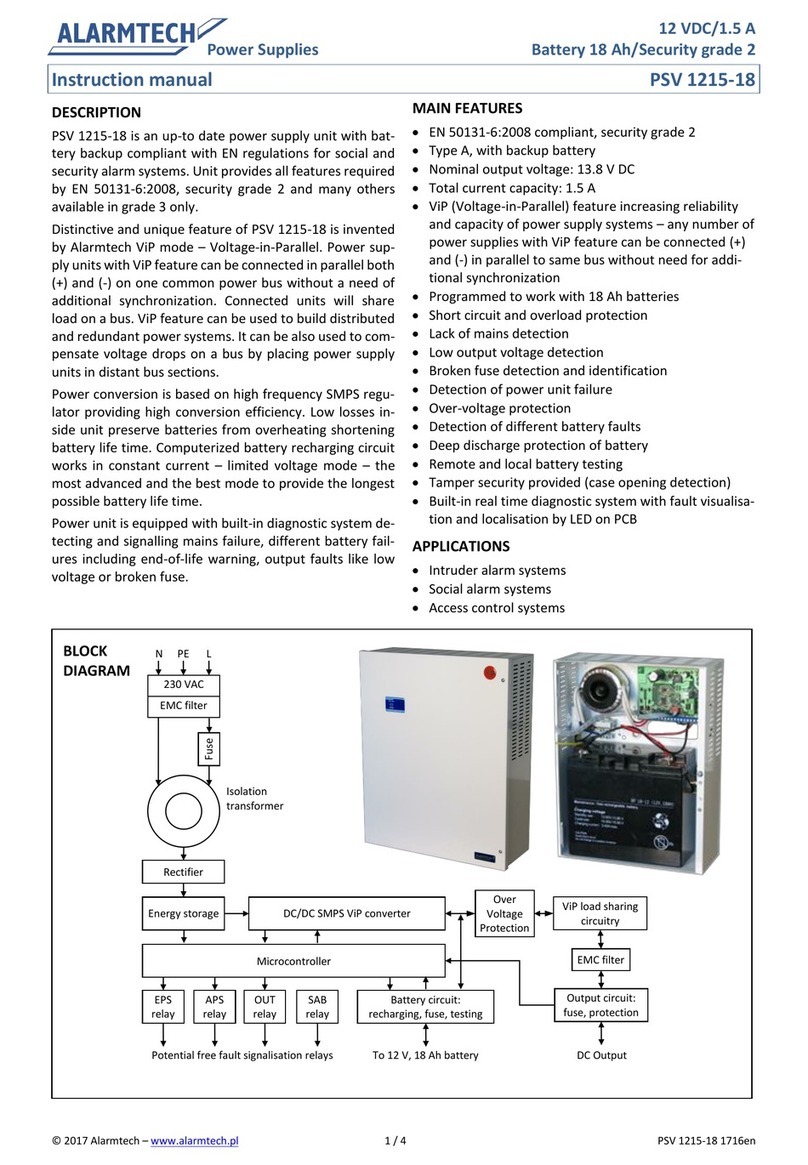
Alarmtech
Alarmtech PSV 1215-18 instruction manual
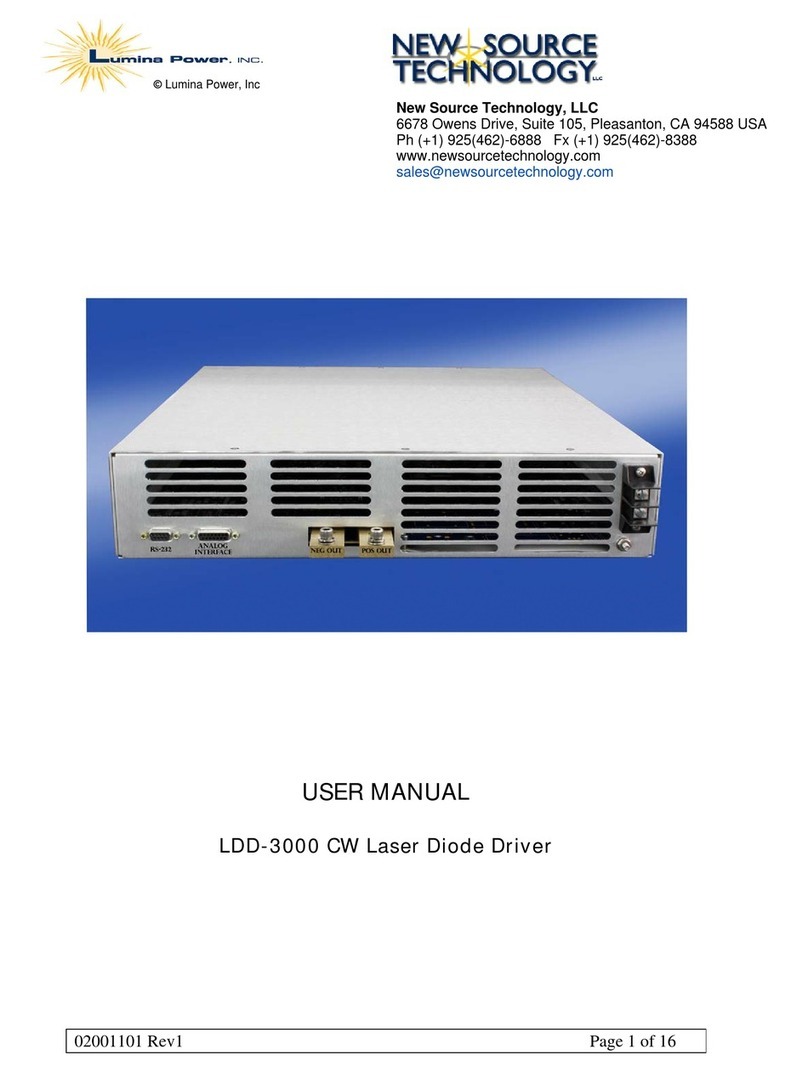
Lumina Power
Lumina Power LDD-3000 user manual
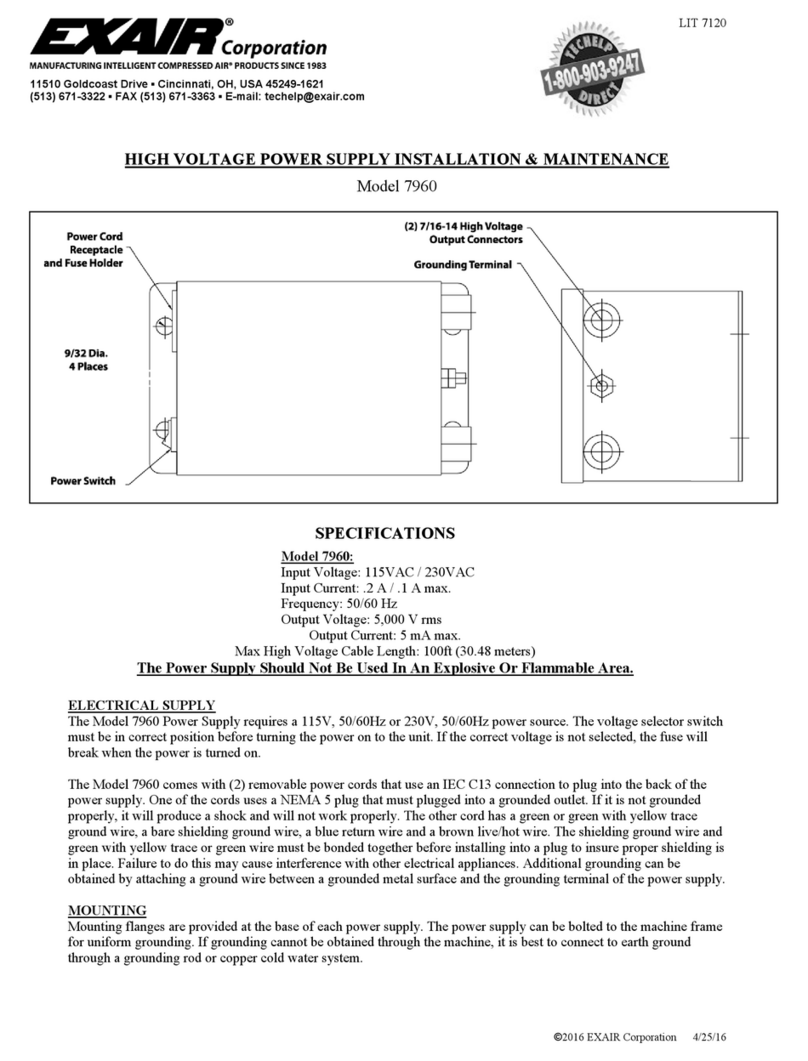
EXAIR
EXAIR 7960 Installation & maintenance
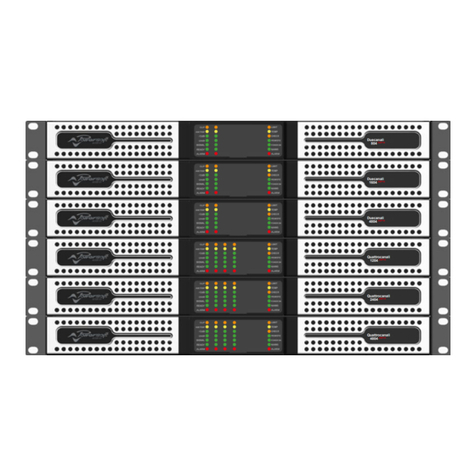
powersoft
powersoft Duecanali Series user guide

American Magnetics
American Magnetics 601 Installation, operation and maintenance instructions
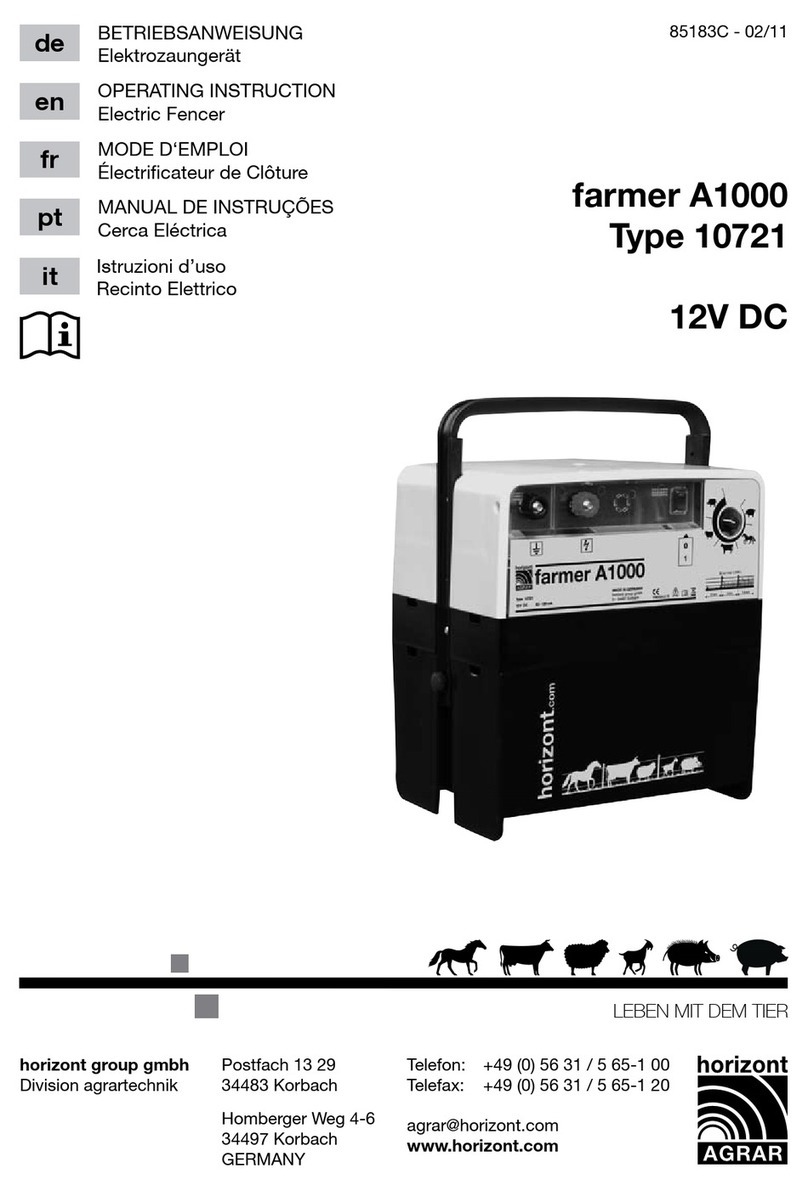
Horizont Agrar
Horizont Agrar farmer A1000 Operating instruction
